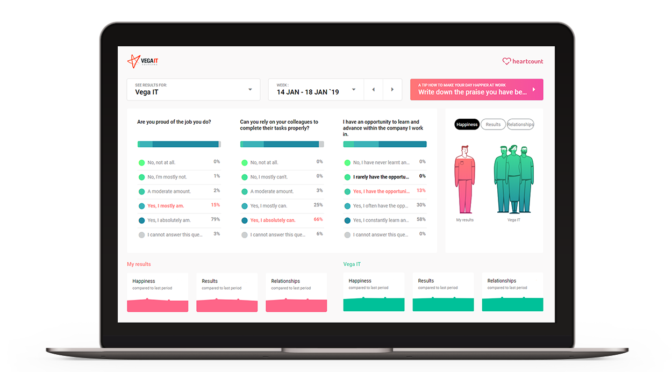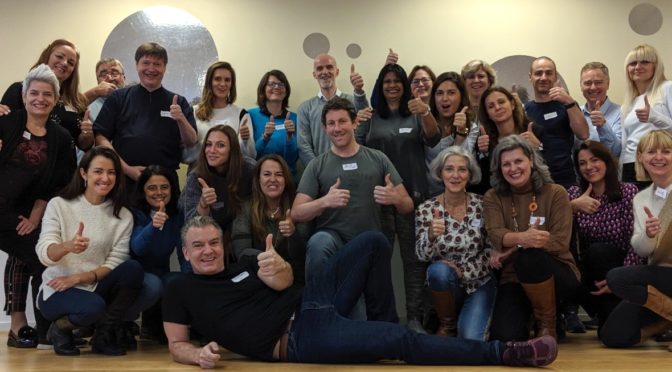
Back when I was still working in the tech industry (I was a software developer for a small consulting company in my second job out of university) I had a boss that was… shall we say unpopular. My co-workers and I hated his guts and we complained ceaselessly about him.
It got to the point where we couldn’t start a meeting, have lunch in the cafeteria, or even go out for a beer without spending half an hour complaining about him.
We whined about his attitude, his stupidity, his meddling, his spinelessness … hell, even his dress sense came under fire. But then again, he is the only manager who has ever interviewed me wearing a narrow 80s style purple, fake-leather tie.
But did we ever tell him? Nooooooo! While we were bitching and moaning to ourselves, he blithely went on as usual because no one ever complained to him. Which might’ve made sense when you think about it…
Looking back, I’m not sure that complaining to him would have worked – I think he was incorrigible – but one thing is for damn sure: Our moaning about it did not improve things one little bit.
That kind of chronic complaining in the workplace, justified or not, leads to no good. In fact, in can be downright toxic and can help make a department or even a whole company a terrible place to work.
Here’s why constant complaining is so bad:
1: It makes things look worse than they are
When people complain, they focus only on what’s wrong. Things may be mostly fine in the company, but complainers only talk about the problems, annoyances and peeves they perceive.
If things in a company are 80% good and 20% bad and you spend most of your time thinking and talking about the bad 20% – the situation will look a lot worse than it really is.
2: It becomes a habit
The more you complain, the easier it gets. In the end, everything is bad, every situation is a problem, every co-worker is a jerk and nothing is good.
The more you focus on the negative, the harder it gets to switch into a positive mindset.
3: You get what you focus on
According to Wikipedia, Confirmation bias is:
…a tendency to search for or interpret new information in a way that confirms one’s preconceptions and avoid information and interpretations which contradict prior beliefs.
In other words, what you already believe influences your perception of everything around you. That’s why constant complaining makes you see everything in a negative light, because your subconscious mind tries to make new observation fit with what you already know.
4: It leads to onedownmanship
A complaining session might go something like this:
The other day, my boss came in 5 minutes before I was leaving and asked me to finish two huge projects for him. I had to stay two hours and missed my football game.
Yeah, well my boss told me to work this weekend AND the next.
Hah, that’s nothing! My boss…
This type of interaction rewards the person with the worst story who can complain the loudest. Not healthy!
5: It makes people despondent
Not only does constant complaining make you see the workplace as worse than it really is, but because you’re constantly hearing stories of how bad things are and how they’re constantly getting worse it also destroys all hope that things can get better.
This of course makes people less likely to take action to improve their situation, because everybody knows it’s doomed to fail anyway.
6: It kills innovation
Because the situations looks so hopeless, people become less creative and innovative. What’s the point of coming up with ideas and implementing them – it’s never going to work anyway.
Also, chronic complainers are the first to shoot down any new idea.
7: It favors negative people
The way to get status among complainers is to be the most negative. To be the one who sees everything in the most negative light.
Any attempt to be positive or cheerful will be shot down and optimists will be accused of being Pollyanna, naive and unrealistic.
8: It promotes bad relationships
People who complain together unite against the world and can create strong internal relationships based on this. But these relationships are based mostly on negative experiences. That’s not healthy.
It also means that you can only continue to be a part of the group if you can continue to complain, miring you even deeper in a complaint mindset.
9: It creates cliques
Being positive, optimistic and appreciative makes you more open towards other people – no matter who they are. It becomes easy to connect to co-workers in other departments, projects or divisions.
Complaining, on the other hand, makes people gather in cliques with their fellow complainers where they can be critical and suspicious of everybody else.
10: Pessimism is bad for you
Research in positive psychology has shown that people who see the world in a positive light have a long list of advantages, including:
- They live longer
- They’re healthier
- They have more friends and better social lives
- They enjoy life more
- They’re more successful at work
We sometimes think that pessimists and complainers have the edge because they see problems sooner but the truth is that optimists not only lead better lives, they’re also more successful because they believe that what they’re doing is going to work.
The upshot
Constant complaining in the workplace is toxic. It can drain the happiness, motivation, creativity and fun from a whole company. Wherever it’s going on it must be addressed and handled properly.
I’m NOT saying that we should never complain at work – quite the contrary. If you see a problem in your workplace, complain to whoever can do something about it.
What we should avoid at all costs, is constant bitching and moaning, where we’re always complaining about the same things, to the same people, in the same way, day in and day out.
So what can we do about it? Well first of all, each of us can learn to complain constructively. This means learning to complain in a way that leads to the problem being fixed – rather than to more complaining. Here’s my post on how you can How to complain constructively.
Secondly, we can learn to deal with the chronic complainers we meet at work. Unfortunately, our traditional strategies like trying to cheer them up or suggesting solutions for their problems don’t work because complainers aren’t looking for encouragement or solutions. Here’s my post on how to deal with chronic complainers.
Finally, you can train your own ability to be positive. Just like complaining can become a habit, so can being appreciative, optimistic and grateful. You could declare today a positive day, you could take a few minutes at the end of every work day to write down five good experiences from that day or you could praise a co-worker.
Try it and let me know how it goes!
Your take
But what do you think? Do you know any chronic complainers at work? What is their impact? How do you complain, when you see a problem?
Please write a comment, I’d really like to know!
Related
Here are some related posts about workplace complaining:





















